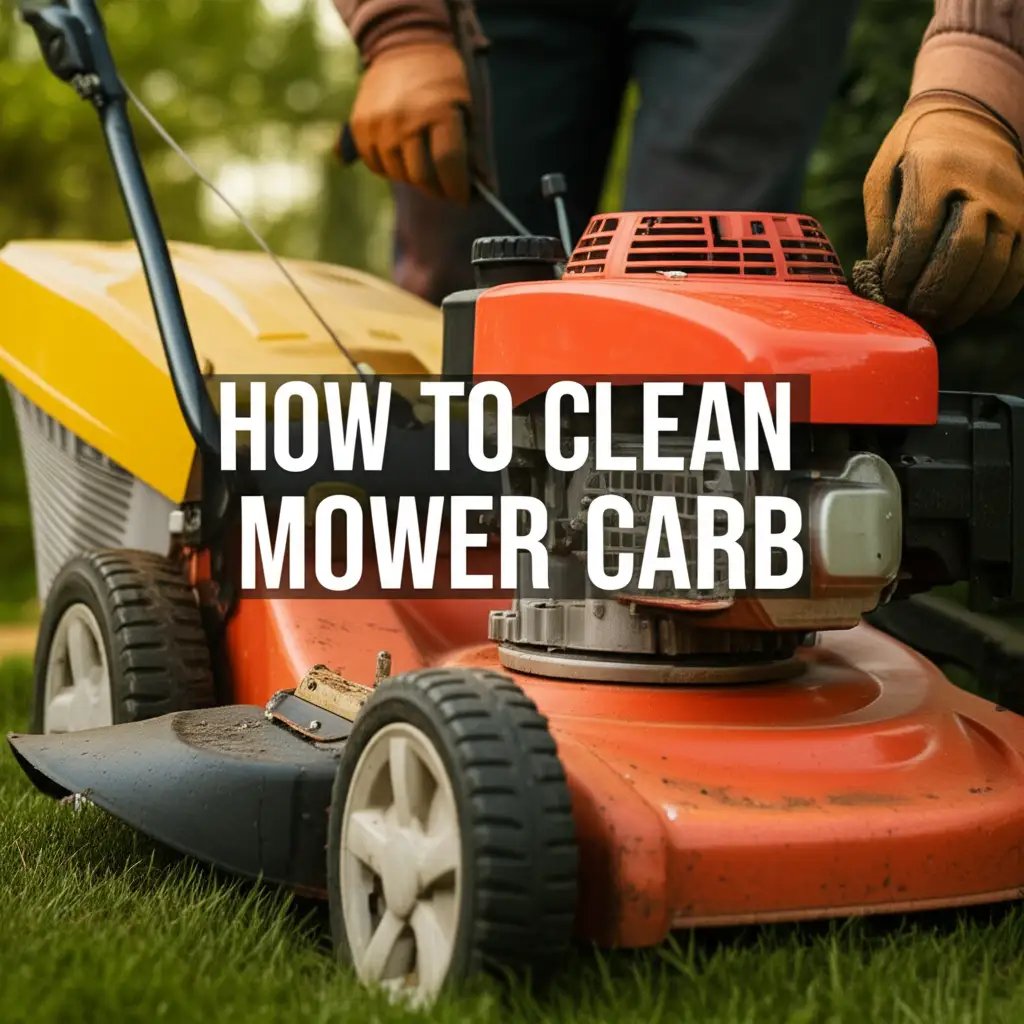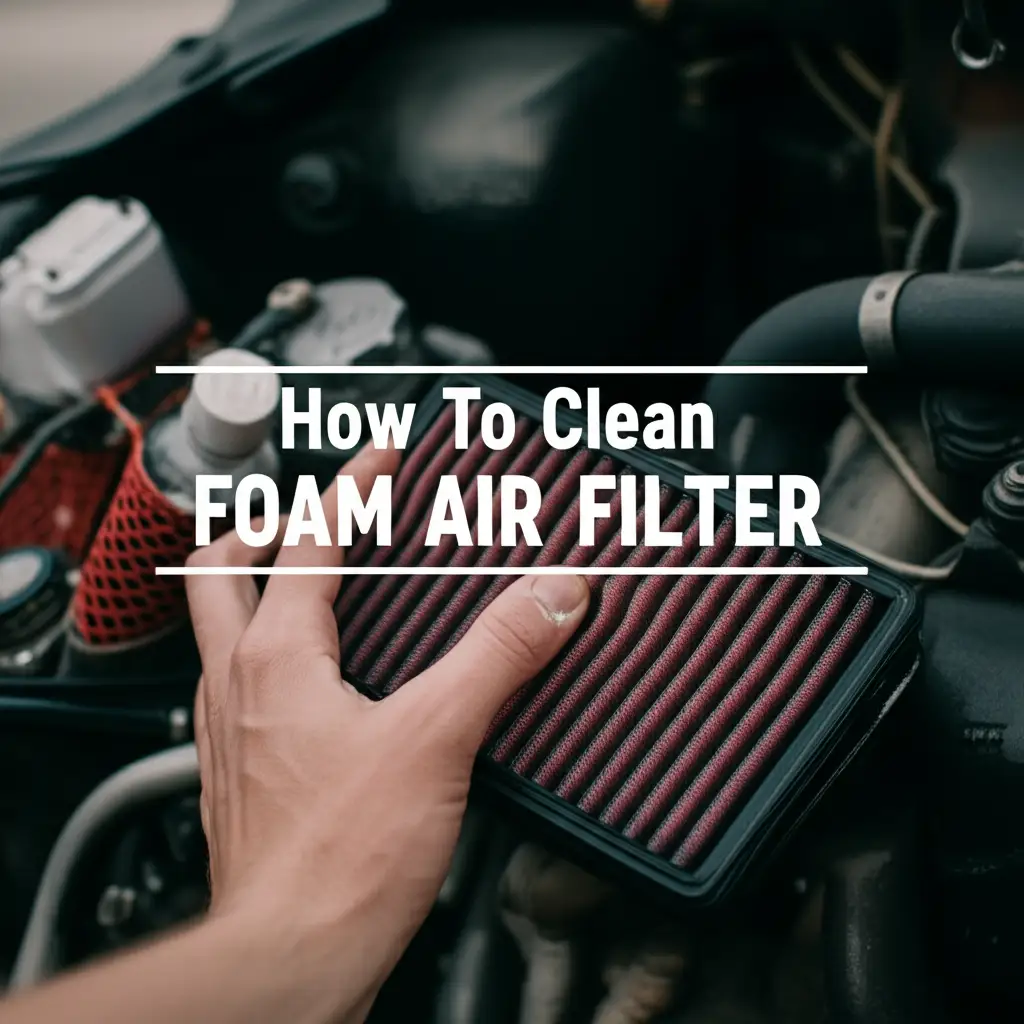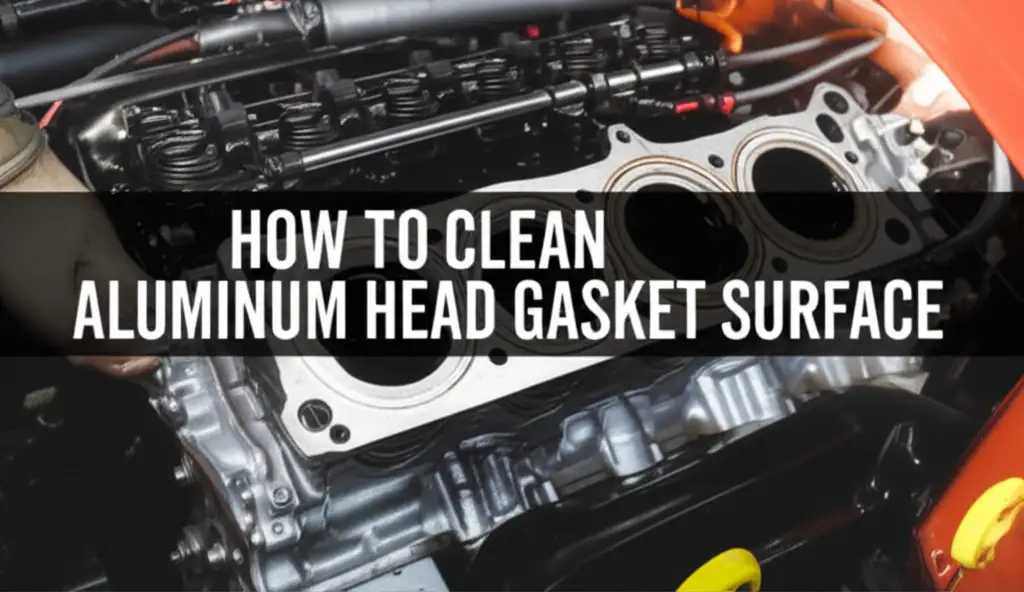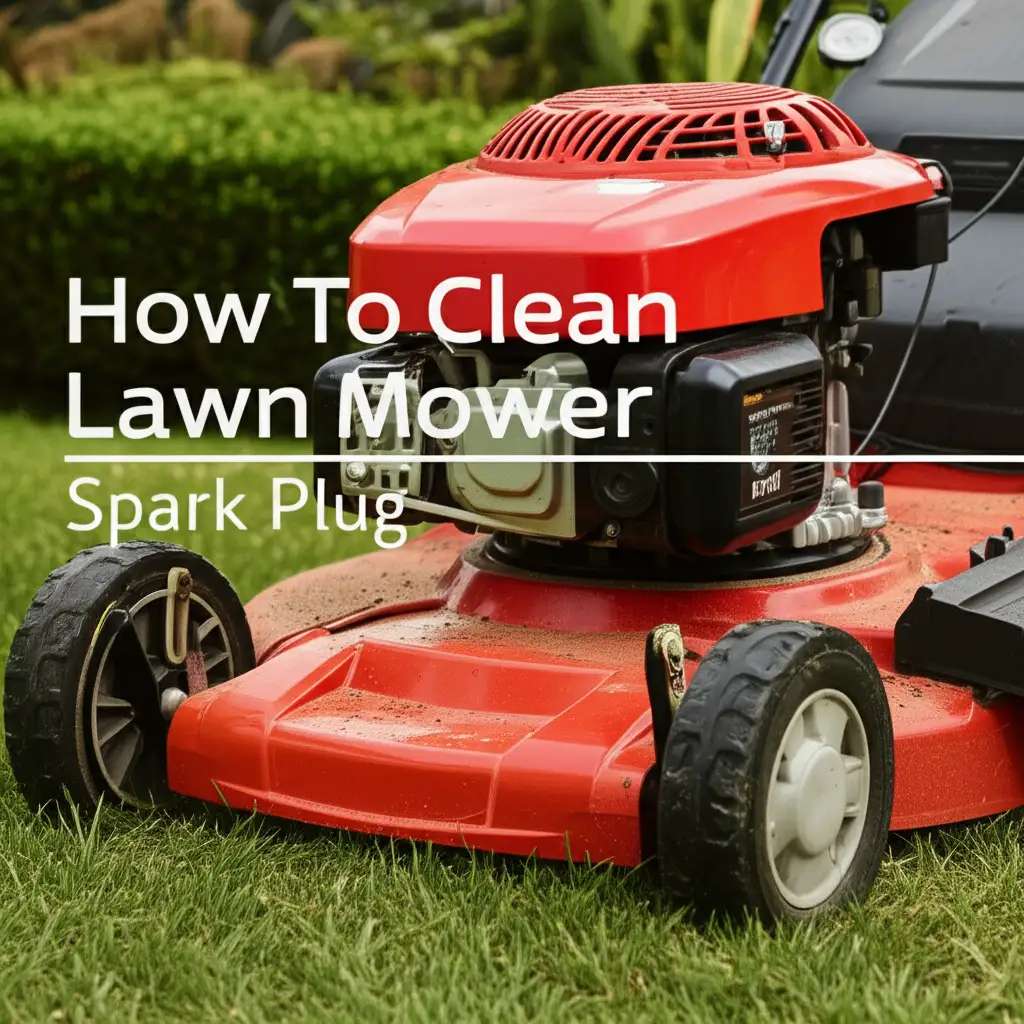· Maintenance · 19 min read
How To Clean Mower Carb

Restore Your Mower’s Power: How To Clean Mower Carb
Is your lawn mower sputtering, losing power, or refusing to start when you need it most? A dirty carburetor often causes these frustrating problems. Over time, fuel deposits and debris can clog the tiny passages inside this vital engine part. Learning how to clean mower carb can bring your machine back to life.
This guide helps you understand why carburetor cleaning is important. We will walk you through the necessary tools and safety steps. Then, you will get clear instructions on removing, cleaning, and reinstalling your mower’s carburetor. By the end, you will feel confident tackling this common maintenance task. You will save money on repairs and ensure your mower runs smoothly for years.
Takeaway: Restore Your Mower’s Performance
- Identify Issues: Recognize symptoms of a dirty carburetor like poor starting or sputtering.
- Gather Tools: Collect specific tools and cleaning agents before starting.
- Prioritize Safety: Always disconnect the spark plug and work in a well-ventilated area.
- Systematic Cleaning: Follow steps for removal, careful disassembly, thorough cleaning, and proper reassembly.
- Prevent Future Clogs: Use fuel stabilizer and proper storage to keep the carburetor clean.
Cleaning your mower carb involves removing the component, disassembling it carefully, and spraying carburetor cleaner through all passages and jets. Reassemble the carb with new gaskets if needed, then reinstall it on the mower. This process removes fuel varnish and debris, restoring proper fuel-air mixture for smooth engine operation.
Understanding Your Mower’s Carburetor: Why Cleaning Matters
Your mower’s carburetor is like its heart, mixing air and fuel in precise amounts. This mixture powers the engine. Over time, fuel can break down and leave sticky deposits, especially if you store the mower with old gas. These deposits clog tiny ports and jets inside the carburetor. When this happens, the engine does not get the correct fuel-air mix. This leads to common problems such as hard starting, rough idling, lack of power, or even complete failure to run.
Cleaning the carburetor addresses these issues directly. It removes the clogs and allows fuel to flow freely again. A clean carburetor ensures efficient fuel use and consistent engine performance. It extends your mower’s lifespan, saving you from costly professional repairs or early replacement. Regular cleaning, or cleaning when symptoms appear, keeps your lawn mower ready for any task.
Many people wonder if they can clean the carb without removing it. While some methods exist, a thorough cleaning often requires removal. This lets you access all internal parts and really get rid of stubborn clogs. Knowing how to do a full cleaning gives you the best results.
Gathering Your Tools and Supplies for Carburetor Cleaning
Before you begin to clean your mower carb, gather all necessary tools and supplies. Having everything ready saves time and makes the job smoother. You do not want to stop midway to find a missing wrench. Proper tools ensure you can disassemble and reassemble the carburetor without damage.
Here is a list of what you will likely need:
- Wrench Set or Socket Set: For removing the carburetor bolts and other fasteners.
- Screwdriver Set: Both flathead and Phillips, for various screws on the carburetor and air filter housing.
- Carburetor Cleaner: This specialized solvent dissolves fuel deposits and varnish. Choose an aerosol can with a thin spray straw.
- Compressed Air: Useful for blowing out passages after spraying with cleaner.
- Small Wire or Carburetor Cleaning Kit: These kits often include tiny wires or needles to clear small jets. A strand from a wire brush can also work in a pinch.
- Safety Glasses and Gloves: Protect your eyes and hands from chemicals and debris.
- Shop Rags or Paper Towels: For wiping up fuel and cleaner spills.
- Drain Pan: To catch any fuel that might spill when disconnecting lines.
- New Gaskets (Optional but Recommended): Carburetor gaskets can harden and crack. Replacing them ensures a good seal. Check your mower’s model for specific gasket kits.
- Small Container: To hold small parts like screws and springs during disassembly. This helps prevent losing them.
You might also consider having a fuel stabilizer on hand for future use. This prevents fuel breakdown, which is a major cause of carburetor clogs. Having these items ready ensures a safe and efficient cleaning process.
Safety First: Essential Precautions Before You Begin Cleaning
Safety is the most important step before you start cleaning your mower carb. Carburetor cleaning involves handling flammable fuels and harsh chemicals. Taking precautions protects you from injury and prevents accidents. Never rush through these safety steps.
Here are the critical precautions you must take:
- Disconnect the Spark Plug: This is crucial. Remove the spark plug wire from the spark plug. This prevents the engine from accidentally starting while you are working on it. An unexpected engine start could cause serious injury.
- Work in a Well-Ventilated Area: Carburetor cleaner fumes are strong and can be harmful if inhaled. Work outdoors or in a garage with open doors and windows. Good ventilation dissipates the fumes.
- Wear Personal Protective Equipment (PPE):
- Safety Glasses: Protect your eyes from chemical splashes and debris.
- Chemical-Resistant Gloves: Protect your skin from carburetor cleaner, which can cause irritation.
- Long Sleeves and Pants: Protect your arms and legs from spills.
- Handle Fuel Safely:
- Work away from open flames, sparks, or anything that could ignite fuel vapors. This includes pilot lights and electrical tools that spark.
- Have a fire extinguisher nearby, just in case.
- Drain the fuel tank or close the fuel shut-off valve before disconnecting fuel lines. Use a drain pan to catch any spills. Proper fuel handling reduces fire risk significantly.
- Secure the Mower: Make sure the mower is stable and cannot tip over while you are working on it. If you need to tilt the mower, ensure it rests securely.
- Read Product Labels: Always read the instructions and warnings on your carburetor cleaner can. Different cleaners may have specific safety guidelines.
Following these steps ensures a safe work environment. It protects you from the hazards associated with cleaning your mower’s carburetor. Your safety comes first, always.
Step-by-Step Guide: Removing Your Mower Carburetor
Removing the carburetor is the first practical step in cleaning it thoroughly. This process varies slightly by mower model, but the general steps remain similar. Take your time and keep track of all parts. I often take pictures with my phone at each stage; this helps immensely during reassembly.
Here is how to remove your mower’s carburetor:
- Drain the Fuel (or Clamp Fuel Line): First, either drain all gasoline from the fuel tank or use a fuel line clamp to stop fuel flow. Place a drain pan under the fuel line connection to catch any spills. Disconnect the fuel line from the carburetor.
- Remove the Air Filter Assembly: The carburetor is usually located behind the air filter housing. You will need to unbolt or unclip the air filter cover and then remove the filter itself. Set these aside. You might also want to clean your air filter at this point, or replace it if it’s too dirty. Learn how to clean air filter on lawn mower.
- Disconnect Linkages and Wires: You will see a few rods or wires connected to the carburetor. These are typically the throttle linkage and sometimes a choke linkage. Carefully note their positions or take photos before disconnecting them. Some mowers also have electrical wires, like a fuel shut-off solenoid; disconnect these if present.
- Remove Mounting Bolts: The carburetor is usually held in place by two or more bolts that pass through it and into the engine block. Sometimes these bolts also secure the air filter housing. Use your wrench or socket to carefully loosen and remove these bolts. Be gentle to avoid stripping the bolt heads.
- Gently Pull the Carburetor Away: Once the bolts are out, gently pull the carburetor away from the engine. It might be slightly stuck due to old gaskets. You may need to wiggle it a bit. Be careful not to bend any linkages or damage the mating surfaces.
- Remove Gaskets: Note the gaskets between the carburetor and the engine, and between the carburetor and the air filter housing. These are crucial for a good seal. They often stick to the surfaces. Remove them carefully. You should plan to replace them with new ones during reassembly for the best seal.
- Inspect for Other Components: Some carburetors have a small fuel bowl at the bottom or a primer bulb. Note their connection points. Put all removed screws, linkages, and small parts into your small container. This prevents loss and makes reassembly easier.
Removing the carburetor properly sets you up for an effective cleaning process. Take your time and be methodical. This step is key for thorough cleaning, especially when compared to trying to clean a carburetor on a push mower without removal.
Thorough Cleaning Techniques for Mower Carburetor Components
With the carburetor removed, you can now begin the most important part: cleaning. This process requires patience and attention to detail. The goal is to clear every tiny passage and jet of fuel deposits. I find it satisfying to see the grime wash away.
Follow these steps for a thorough cleaning:
Disassemble the Carburetor:
- Remove the Fuel Bowl: Most carburetors have a bowl at the bottom held by a single bolt or screws. Unscrew it and carefully remove the bowl. Watch out for fuel remaining inside.
- Remove the Float and Needle Valve: Inside the bowl, you will see a plastic or metal float. It pivots on a pin. Gently push the pin out to remove the float. The needle valve usually hangs from the float or sits in a seat beneath it. Carefully remove both.
- Remove Jets and Screws: Identify any visible main jets (brass screws with small holes) and idle mixture screws. Use the appropriate screwdriver to carefully remove them. These are often the primary points of clog. Some carburetors have pressed-in jets; do not try to remove these unless you are an expert.
- Remove Primer Bulb (if applicable): If your mower has a primer bulb attached to the carburetor, carefully unclip or unscrew it.
- Keep Parts Organized: Place all tiny parts into your small container. This prevents loss.
Soak and Spray with Carburetor Cleaner:
- Place all metal carburetor parts (excluding any rubber or plastic parts like the float or primer bulb, as cleaner can damage them) into a shallow tray.
- Spray all parts generously with carburetor cleaner. Make sure the spray straw reaches into every hole, passage, and jet. Let the cleaner sit for a few minutes to dissolve deposits.
- Focus on Passages: Pay extra attention to the small holes in the main body, especially where the jets screw in. Spray through these from all angles.
- If your carb is extremely dirty, you might consider letting the metal parts soak in a small amount of cleaner for an hour or two. However, do not leave them soaking too long, as some cleaners can cause discoloration.
Clear Clogged Passages:
- After soaking and spraying, use fine wire (from a carburetor cleaning kit or a wire brush strand) to carefully poke through all the tiny holes and jets. This helps dislodge stubborn deposits.
- Be gentle. Do not force the wire, as you could enlarge or damage the precise openings. The goal is to clear, not ream.
- Follow up with more carburetor cleaner spray through these cleared passages.
Use Compressed Air:
- Once you have sprayed and probed all passages, use compressed air to blow out all the holes, jets, and passages. This removes any loosened debris and cleaner residue.
- Ensure air flows freely through every hole you sprayed cleaner into. If air does not pass, the passage is still clogged. Repeat the cleaning steps until clear.
Clean Exterior and Bowl:
- Wipe down the exterior of the carburetor body and the inside of the fuel bowl with a clean rag and some cleaner. Ensure the bowl is perfectly clean.
This thorough cleaning process, including disassembly and clearing every passage, is far more effective than trying to clean a lawn mower carburetor without removing it. It addresses the root cause of poor performance.
Reassembly and Reinstallation: Putting Your Carburetor Back Together
Once your mower carb components are sparkling clean, it is time to put everything back together. This step requires precision and attention to detail. Remember those photos you took? Now they come in handy. Proper reassembly ensures the carburetor functions correctly and forms a tight seal, preventing fuel leaks or air leaks that could affect performance.
Here are the steps for reassembly and reinstallation:
Reassemble the Carburetor Components:
- Install Primer Bulb (if applicable): Reattach the primer bulb if you removed it.
- Install Needle Valve and Float: Carefully place the needle valve back into its seat. Then, reinsert the float and secure it with its pivot pin. Gently test the float to ensure it moves freely without sticking.
- Install Jets and Screws: Screw the main jets and any idle mixture screws back into their correct locations. Be firm but do not overtighten them, as they are often brass and can strip easily. Refer to your photos for exact positions.
- Attach Fuel Bowl: Place a new gasket (if you have one) on the fuel bowl. Then, attach the fuel bowl to the carburetor body and secure it with its bolt or screws. Tighten it snugly to prevent leaks.
- Install Diaphragm and Gaskets (if applicable): Some carburetors use a diaphragm and gasket instead of a fuel bowl. Ensure these are positioned correctly and new if possible.
Install New Gaskets on the Engine Side:
- Take your new carburetor gaskets. Place them correctly on the engine side, between the engine and the carburetor, and between the carburetor and the air filter housing. These gaskets are crucial for a proper seal. If you reuse old gaskets, you risk vacuum leaks.
Mount the Carburetor to the Engine:
- Carefully slide the reassembled carburetor back onto the mounting studs or align it with the bolt holes on the engine block. Ensure the gaskets stay in place.
- Insert the mounting bolts. Hand-tighten them first to ensure they are properly threaded. Then, use your wrench to tighten them evenly. Do not overtighten, as this can crack the carburetor body or strip threads.
Reconnect Linkages and Wires:
- Refer to your photos to reconnect the throttle linkage, choke linkage, and any electrical wires (like the fuel shut-off solenoid). Ensure they move freely and are correctly seated. This is where your reference pictures become invaluable.
Reconnect the Fuel Line:
- Reattach the fuel line to the carburetor’s fuel inlet. If you drained the tank, refill it with fresh gasoline. If you used a clamp, remove it now. Check for any leaks immediately after refilling. If you suspect your fuel tank had sediment, now would be a good time to clean the gas tank on your lawn mower.
Reinstall the Air Filter Assembly:
- Place the air filter back into its housing. Then, reattach the air filter cover and secure it with its bolts or clips. A clean air filter is essential for proper engine performance and prevents new debris from entering the carburetor.
By following these steps, you ensure your mower carb is correctly reassembled and reinstalled. This careful process directly contributes to the mower’s reliable operation.
Post-Cleaning Checks and Troubleshooting Common Carburetor Issues
After cleaning and reassembling your mower carb, it is time for the moment of truth: starting the engine. Do not expect it to roar to life immediately; a few checks and adjustments might be needed. Sometimes, air trapped in the fuel system needs to work its way out.
Here is what to do after cleaning:
- Prime the Carburetor: If your mower has a primer bulb, press it several times until you see fuel in the clear line or feel resistance. This fills the fuel bowl.
- Start the Mower: Pull the starter cord (or turn the key for an electric start). It might take a few extra pulls or cranks initially. If it struggles, let it sit for a minute, then try again. The engine needs to draw fuel into the clean carburetor.
- Check for Leaks: While the engine is running, carefully inspect the carburetor and fuel lines for any signs of fuel leaks. Tighten connections if you see any drips.
- Observe Engine Performance:
- Rough Idle: If the engine idles roughly or stalls, the idle mixture screw might need adjustment. Turn it slowly, a quarter turn at a time, until the engine runs smoothly.
- Lack of Power: If the mower still lacks power or sputters under load, the main jet might not be perfectly clear, or other engine components could be the issue.
- Smoke: A small amount of smoke at startup is normal as any residual cleaner burns off. Excessive or continuous smoke indicates another problem, likely not carburetor-related.
- Troubleshooting Persistent Issues:
- Still Not Starting:
- Spark Plug: Check the spark plug. A fouled or old plug can prevent starting. You might need to clean your lawn mower spark plug or replace it.
- Fuel Flow: Ensure fuel is reaching the carburetor. Disconnect the fuel line from the carb and check if fuel flows freely into a container.
- Air Leaks: Listen for a hissing sound around the carburetor gaskets. An air leak will cause poor running. If you reused old gaskets, consider replacing them with new ones.
- Vapor Lock: If the engine starts but dies quickly, it could be vapor lock from the fuel line getting too hot.
- Engine Surges: This often means the engine is running lean (too much air, not enough fuel). Recheck all passages for clogs and ensure gaskets are sealing properly. The idle mixture might need further adjustment.
- Engine Floods: If you smell strong gasoline and the spark plug is wet, the float level might be too high or the needle valve is not seating correctly. This allows too much fuel into the engine.
- Still Not Starting:
If the mower continues to have problems, it might be time for professional help. However, in most cases, a thorough cleaning of the mower carb resolves performance issues.
Preventative Maintenance: Keeping Your Mower Carburetor Clean Longer
Cleaning your mower carb can be a chore, so prevention is always better than cure. By taking a few simple steps, you can significantly extend the time between cleanings and ensure your mower always starts reliably. I always recommend these practices to my friends and family.
Here are key preventative maintenance tips:
- Use Fresh Fuel: Gasoline starts to break down and form varnish deposits in as little as 30 days. Always use fresh gasoline, especially if you do not use your mower frequently. Avoid buying gas in large quantities that will sit for months.
- Add Fuel Stabilizer: This is perhaps the single most effective preventative measure. A good quality fuel stabilizer prevents gasoline from degrading and forming clogs. Add it to your fuel can when you buy gas, or add it directly to the mower’s fuel tank before storing it for any period. Follow the product’s instructions for mixing ratios.
- Run Carburetor Dry for Storage: If you are storing your mower for more than a month (e.g., for winterization), it is best to run the carburetor dry.
- Add fuel stabilizer to the fuel tank and run the engine for 5-10 minutes to circulate it.
- Then, turn off the fuel supply (if your mower has a fuel shut-off valve) or disconnect the fuel line.
- Let the engine run until it runs out of gas and stalls. This ensures there is no fuel left in the carburetor bowl to break down and cause clogs.
- Clean or Replace Air Filter Regularly: A dirty air filter restricts airflow and can cause the engine to run rich, leading to carbon buildup that can affect the carburetor and spark plug. Regularly inspect and clean your lawn mower’s air filter or replace it as needed. A clean air filter is vital for proper engine breathing.
- Use an Inline Fuel Filter: Many mowers come with an inline fuel filter, but if yours does not, consider adding one. This inexpensive component catches debris from the fuel tank before it reaches the carburetor. Regularly check and replace this filter.
- Store in a Dry Place: Store your mower in a dry, covered area to protect it from moisture and extreme temperature fluctuations. This helps prevent condensation in the fuel tank, which can lead to water in the fuel.
- Regular Overall Mower Maintenance: A well-maintained mower is less likely to develop specific issues. This includes checking oil, ensuring blades are sharp, and giving the whole machine a good clean. For broader care, learn how to clean a lawn mower thoroughly.
By adopting these preventative measures, you drastically reduce the chances of needing to clean your mower carb. You will enjoy a more reliable mower that starts easily every season.
FAQ Section
How often should I clean my mower carb?
Clean your mower carb when you notice performance issues like hard starting, sputtering, or loss of power. For preventative maintenance, consider a cleaning every 1-2 years, especially if you do not use fuel stabilizer or store your mower properly for winter. Prevention is always better than reactive cleaning.
Can I clean the carburetor without removing it?
Yes, you can try to clean a carburetor without removing it using specialized spray cleaners. You spray the cleaner into the air intake while the engine runs, or directly into specific ports. However, this method is less thorough and may not clear severe clogs from all internal passages and jets. It is a good first step for minor issues.
What causes a lawn mower carburetor to get dirty?
The primary cause of a dirty lawn mower carburetor is old or stale fuel. As gasoline ages, it breaks down, forming sticky varnish and gum deposits. These deposits clog the small jets and passages inside the carburetor, restricting fuel flow. Debris or water in the fuel can also contribute to clogging and corrosion.
What if my mower still won’t start after cleaning the carb?
If your mower still won’t start after cleaning the carb, check other common issues. Inspect the spark plug for fouling or damage; clean or replace it. Ensure there is fresh fuel in the tank and the fuel line is not blocked. Also, check the air filter and ensure it is clean. A proper spark, fuel, and air supply are all necessary for starting.
Is carburetor cleaner safe for all parts?
Carburetor cleaner is effective on metal parts but can damage some rubber or plastic components like O-rings, gaskets, and primer bulbs. Always remove these parts before soaking the carburetor. If spraying, use it sparingly around non-metal parts. Always read the cleaner’s specific instructions and warnings to avoid damage.
Can I use gasoline to clean my carburetor?
No, do not use gasoline to clean your carburetor. Gasoline is not an effective solvent for the varnish and gum deposits that clog carburetors. It also poses a significant fire hazard. Always use a dedicated carburetor cleaner, which is formulated to dissolve these specific fuel residues safely and efficiently.
Conclusion
Learning how to clean mower carb is a valuable skill for any homeowner. It gives you the power to resolve common engine problems, saving money on professional repairs. We covered everything from understanding the carburetor’s function to thorough cleaning techniques and essential reassembly steps. Remember, safety always comes first when working with fuel and chemicals.
By following this guide, you can restore your mower’s performance. You will enjoy a reliable machine that starts easily and runs smoothly. Implementing preventative maintenance, like using fresh fuel and fuel stabilizer, will keep your carburetor clean for longer. Take charge of your mower’s health; a little effort now ensures many seasons of perfectly cut lawns. Keep your mower running strong, and your lawn will thank you!
- lawn mower
- carburetor
- cleaning
- engine repair
- small engine
- outdoor tools




